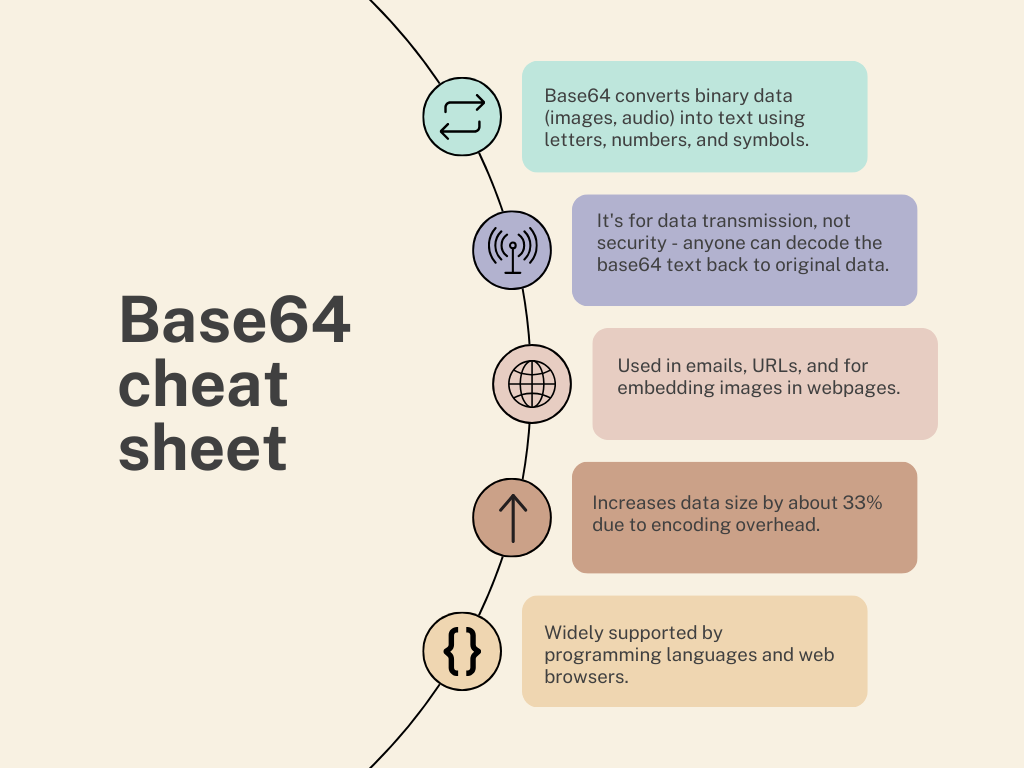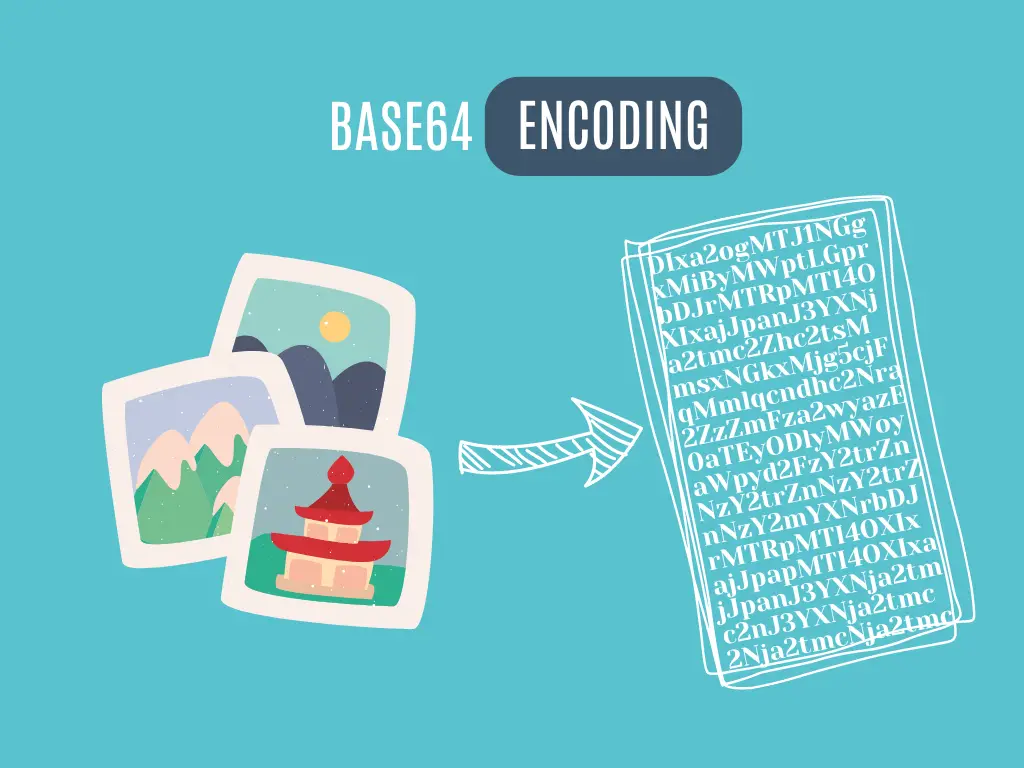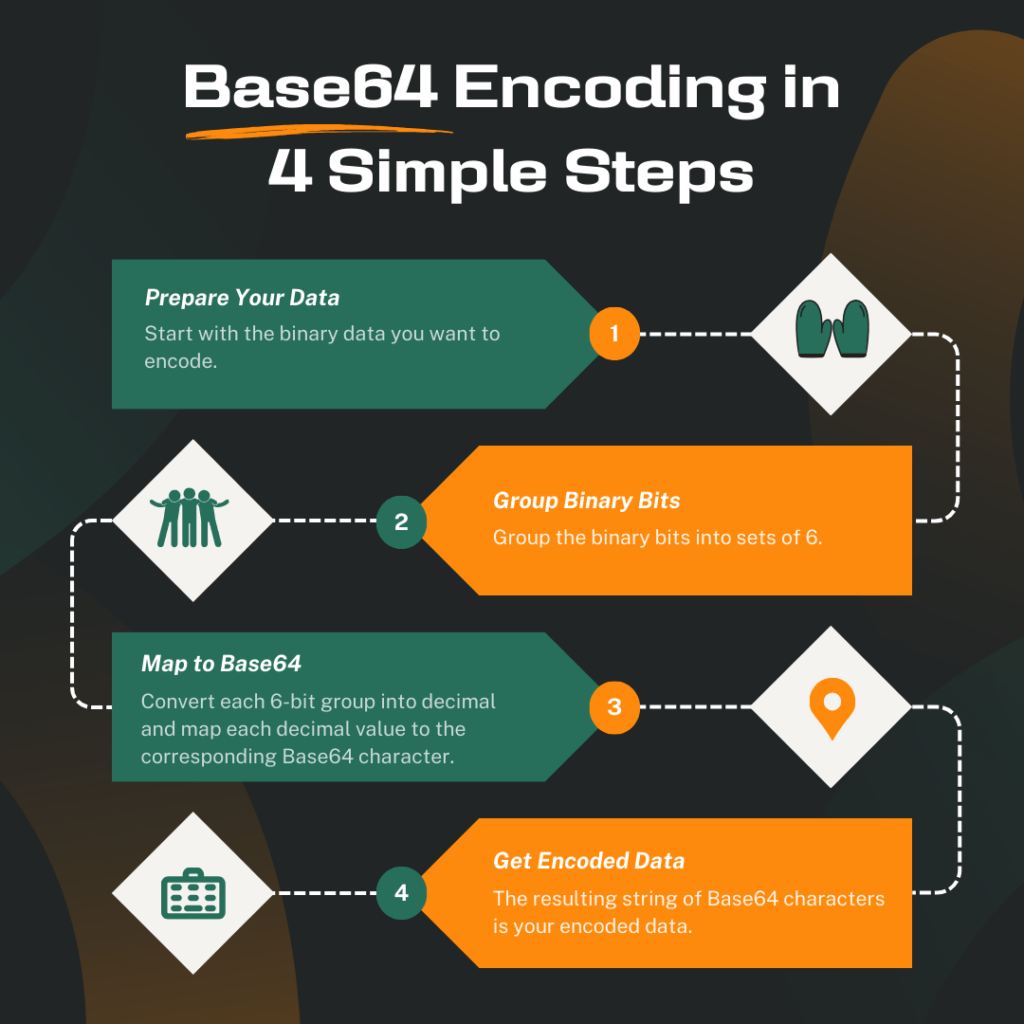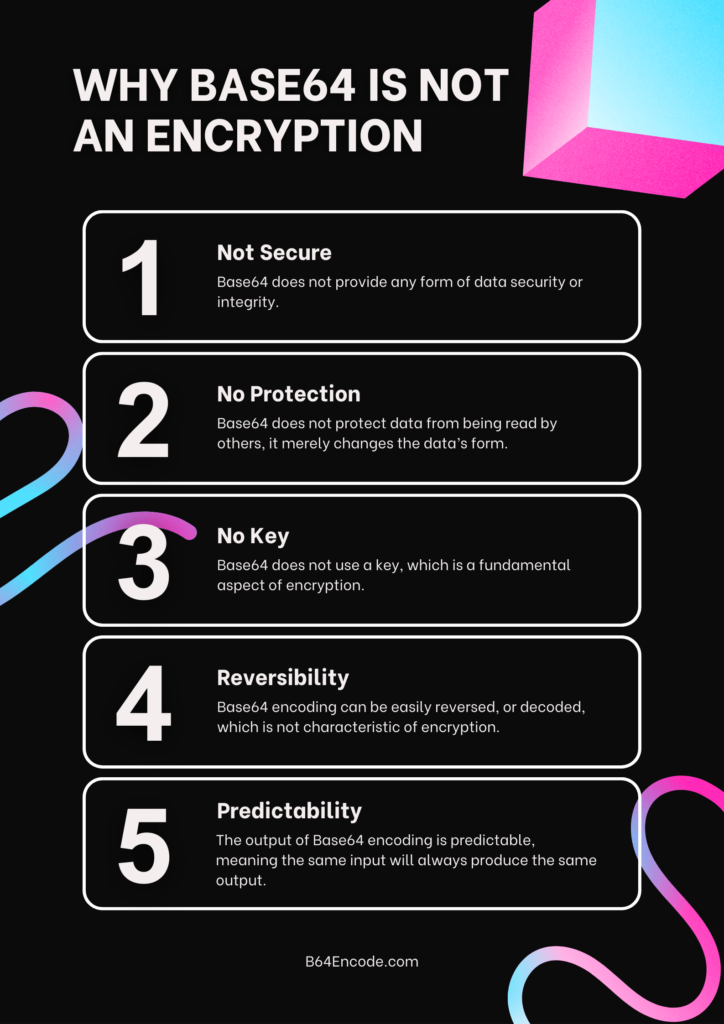Easily encode text or files into Base64 with our Online Base64 Encoder. Discover the power of the Online Base64 Encoder Tool, your one-stop solution for quick and secure data transformation. Convert text and files to Base64 format quickly and easily.
Base64 Encoder
What is Base64?
Base64 is a handy tool for converting binary data into text, commonly employed when you want to save and move data using text. Its job is to make sure your data stays the same when you’re sending it around.
People use Base64 in many ways, like in emails using MIME and when dealing with complex data in XML or JSON.
Here’s how it works: the binary data gets split into 6-bit blocks in Base64. These blocks are then turned into regular text using the ASCII standard, using 64 different characters you can print, like A-Z, a-z, 0-9, +, and /.

What is Base64 Encoding?
Base64 encoding is a method to convert binary data into a plain text format, essential for safe data transfer in text-based systems like email or HTML. It ensures data integrity during transit.

How Does Base64 Encoding Work?
Base64 encoding works by turning binary data into an ASCII string. Here’s a step-by-step explanation:
- Divide the input into octets: The input data is divided into groups of 8-bit bytes (octets). If the total number of bits is not a multiple of 8, padding bits are added.
- Convert to 6-bit blocks: Each 8-bit byte is then divided into two 6-bit blocks. This is because Base64 represents data in 6 bits (thus the ‘64’ in Base64: 2^6 = 64).
- Map to Base64 characters: Each 6-bit block is then mapped to a specific Base64 character. There are 64 possible characters: A-Z, a-z, 0-9, +, and /.
- Add padding if necessary: If the original data was not a multiple of 3 bytes, then padding characters (=) are added to the output to make it a multiple of 4 characters.

Why Use Base64 Encoding?
Base64 encoding plays a crucial role in ensuring text-based system compatibility and preventing data corruption during transmission across various platforms and communication channels. By converting binary data into an ASCII string format, Base64 encoding enables seamless transfer and storage of data in text-based systems, minimizing the risk of corruption or loss.
This encoding scheme ensures that data remains compatible and intact, even when transmitted through systems not designed to handle raw binary data. By representing binary data using a set of printable characters, Base64 encoding maintains data integrity and compatibility, allowing for reliable transmission and storage in diverse environments. Consequently, Base64 encoding is widely used in various applications, including email attachments, image encoding, and secure data transfer, to ensure smooth and error-free data exchange.
What is the Purpose of our Free Online Base64 Encoder?
Our free online Base64 encoder offers a convenient and user-friendly platform for converting text or files into their Base64-encoded equivalents, without any software installation or coding expertise required. This web-based tool simplifies the encoding process, making it accessible to users of all skill levels. By eliminating the need for software installation or coding knowledge, our online Base64 encoder ensures a seamless and hassle-free experience for everyone.
How Do I Use the Free Online Base64 Encoder?
- In the input field, enter the text you want to encode or upload a file.
- Customise the settings, you can set each line to be encoded separately or the format of the output result.
- No need to press a button, the Base64 result will automatically appear in the Output field.
- If you want, you can copy the result using the Copy button.
Is Base64 Encoding An Encryption?
No, Base64 encoding is not encryption. Base64 is a method of encoding binary data, converting it into a plain text format. The primary purpose of Base64 encoding is to facilitate the safe transport of binary data over text-based systems, such as email or HTML. It does not provide security or confidentiality measures like encryption. The encoded data can be easily decoded back to its original binary form, and there is no inherent protection against unauthorized access or tampering. If security is a concern, encryption methods specifically designed for securing data should be employed.

Is It A Base64 Encrypter?
A common misconception about Base64 encoding is that it provides data encryption and security, but this is not the case. The primary purpose of Base64 encoding is to represent binary data in an ASCII string format, enabling seamless transfer and storage across various systems and platforms. This encoding scheme ensures data integrity and compatibility without altering the content itself.
However, it’s crucial to understand that Base64 encoding does not offer any encryption or security measures to protect the data. Base64-encoded data can be easily decoded back into its original binary form by anyone with access to the encoded string. Therefore, it is not suitable for securing sensitive information or protecting data from unauthorized access. To secure data, use established encryption methods and protocols designed specifically for data protection and privacy.
Is It Secure To Use Your Base64 Converter?
Absolutely. Our application is client-side, which means that all conversion procedures take place within your browser. No data is saved on our server, guaranteeing that your information is kept private and secure during the conversion process.
Base64 Characters and Table
The Base64 encoding scheme relies on a specific set of ASCII characters to represent binary data efficiently and effectively. This set consists of 64 characters, including uppercase letters (A-Z), lowercase letters (a-z), digits (0-9), and two additional symbols, typically “+” and “/”. These 64 characters provide a comprehensive and printable representation of binary data, enabling seamless transfer and storage across various systems and platforms.
When the length of the binary data is not a multiple of three bytes, the “=” character is used for padding in the encoded string. This padding ensures that the encoded data maintains a consistent structure and can be accurately decoded back into its original binary form. By understanding the composition and role of each character in the Base64 encoding scheme, users can effectively work with encoded data and ensure successful data transfer and storage.
| Value | Character | Binary Value |
|---|---|---|
| 0 | A | 000000 |
| 1 | B | 000001 |
| 2 | C | 000010 |
| 3 | D | 000011 |
| 4 | E | 000100 |
| 5 | F | 000101 |
| 6 | G | 000110 |
| 7 | H | 000111 |
| 8 | I | 001000 |
| 9 | J | 001001 |
| 10 | K | 001010 |
| 11 | L | 001011 |
| 12 | M | 001100 |
| 13 | N | 001101 |
| 14 | O | 001110 |
| 15 | P | 001111 |
| 16 | Q | 010000 |
| 17 | R | 010001 |
| 18 | S | 010010 |
| 19 | T | 010011 |
| 20 | U | 010100 |
| 21 | V | 010101 |
| 22 | W | 010110 |
| 23 | X | 010111 |
| 24 | Y | 011000 |
| 25 | Z | 011001 |
| 26 | a | 011010 |
| 27 | b | 011011 |
| 28 | c | 011100 |
| 29 | d | 011101 |
| 30 | e | 011110 |
| 31 | f | 011111 |
| 32 | g | 100000 |
| 33 | h | 100001 |
| 34 | i | 100010 |
| 35 | j | 100011 |
| 36 | k | 100100 |
| 37 | l | 100101 |
| 38 | m | 100110 |
| 39 | n | 100111 |
| 40 | o | 101000 |
| 41 | p | 101001 |
| 42 | q | 101010 |
| 43 | r | 101011 |
| 44 | s | 101100 |
| 45 | t | 101101 |
| 46 | u | 101110 |
| 47 | v | 101111 |
| 48 | w | 110000 |
| 49 | x | 110001 |
| 50 | y | 110010 |
| 51 | z | 110011 |
| 52 | 0 | 110100 |
| 53 | 1 | 110101 |
| 54 | 2 | 110110 |
| 55 | 3 | 110111 |
| 56 | 4 | 111000 |
| 57 | 5 | 111001 |
| 58 | 6 | 111010 |
| 59 | 7 | 111011 |
| 60 | 8 | 111100 |
| 61 | 9 | 111101 |
| 62 | + | 111110 |
| 63 | / | 111111 |
Base64 Encoding Examples
Here’s a table that shows some examples of Base64 encoding:
| Original Text | Base64 Encoded Text |
|---|---|
| Hello | SGVsbG8= |
| Base64 | QmFzZTY0 |
| Example | RXhhbXBsZQ== |
| 123456789 | MTIzNDU2Nzg5 |
| ABCDEFGH | QUJDREVGR0g= |
| This is a test. | VGhpcyBpcyBhIHRlc3Qu |
| The quick brown fox jumps over the lazy dog. | VGhlIHF1aWNrIGJyb3duIGZveCBqdW1wcyBvdmVyIHRoZSBsYXp5IGRvZy4= |
The examples provided demonstrate the transformation of original text (left) into Base64 encoding (right). Upon examination, the encoded text reveals a mix of uppercase and lowercase letters, numbers, and special characters. This mix is characteristic of Base64 encoding, as we wrote before.







